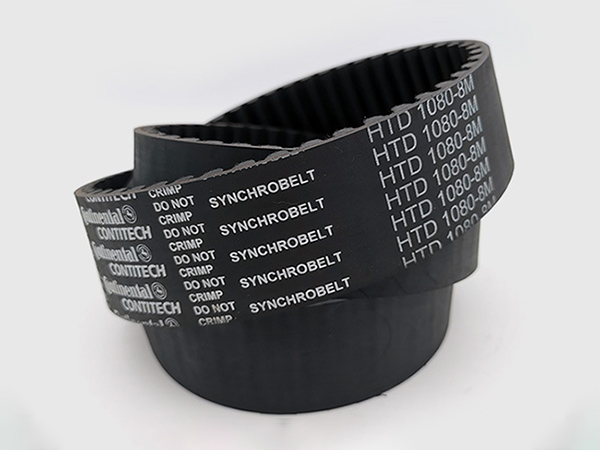Rubber synchronous belt is inevitable to be damaged in the process of our daily production. For example, various kinds of strip-shaped sharp tools mixed in the process of material transportation, such as welding electrode and steel drill rod, may be embedded into the conveyor belt at any time to cause longitudinal tear (especially on the round pipe conveyor belt and steel wire rope core conveyor belt), or the mechanical belt mouth falls off, the idler is damaged, and the wire rope core is exposed As well as cutting edge damage, resulting in conveyor belt deviation, can cause conveyor belt longitudinal tear.
It is easier to repair the above defects with rubber repair agent, which is faster and more economical than vulcanization repair. The rubber repair agent is a prepolymer compound. It is a two-component liquid at room temperature. It is self vulcanized into polyurethane rubber after mixing in proportion. It is solidified at room temperature. It has good adhesion with conveyor belt and metal body. The body has high elasticity, high wear resistance and high toughness.
Rubber repair agent is very effective in repairing longitudinal tear of rubber steel core belt, but it can not be used as adhesive. When the diameter of the belt is less than 1 / 5 of the belt width, the conveyor belt still has enough overall strength, which can be repaired with repairing fluid without leakage.

The repair process is divided into three steps:
(1) Surface treatment: the purpose of surface treatment is to make the repair agent better bond with the conveyor belt skeleton. The key to successful repair is to grind the break into a groove of 60 ° to 90 ° and clean the surface. According to the damage condition, cut into different groove, grind with grinding wheel, clean with cleaning solution (such as acetone).
(2) Glue mixing and repairing: choose liquid repairing agent, mix resin and curing agent according to proportion, mix evenly, and smear in groove. Generally, the curing time is from several minutes to more than ten minutes, and the repair work must be completed before the curing. The groove should be larger so that the repair agent can stick the undamaged cover adhesive.
(3) Curing and curing: the repairing agent is self vulcanized in the groove to obtain its physical and chemical properties and bonding effect with the matrix. Generally, it takes several hours to several days at room temperature, and the curing rate can reach 70% - 80% in the first few hours, and 90% in 24 hours in one day. When the ambient temperature is increased, the curing time will be significantly shortened, and the insulation or heating curing measures should be taken when the outdoor construction is carried out in winter.